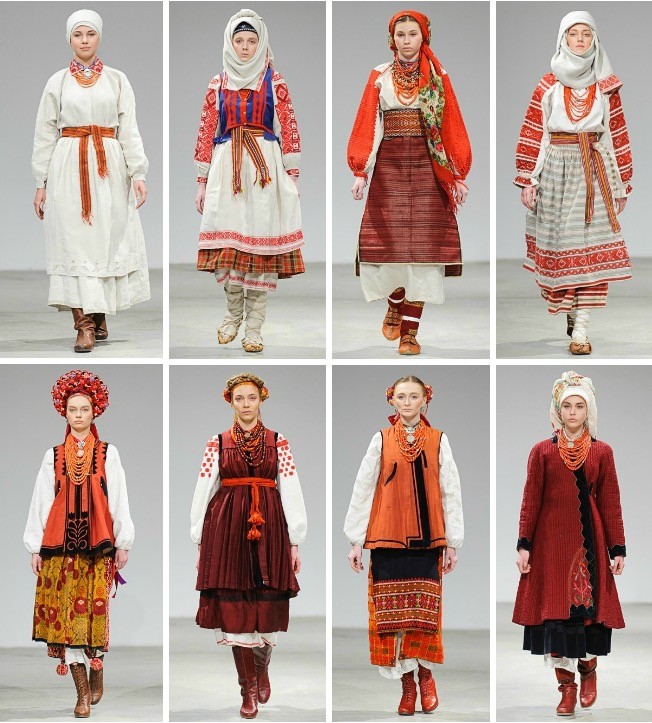LEMKOS

According to one version, Lemko ancestors were the ancient tribes of White Croats who lived on the slopes of the Carpathian Mountains.
The number of Lemkos on territories of pre-war Poland was estimated between 100,000 and 150,000 people. The Lemkos survived many tragic moments in their long history: first, internment in the Talerhof camp, created by the Austro-Hungarian authorities during WWI near Graz, Austria where tens of thousands of Ukrainians and Lemkos were imprisoned for their political opposition to Austrian rule. In 1944-1946, about 70% of the Lemko people were spread out in Soviet Ukraine within the framework of the so-called population exchange between Poland and the Soviet Union. In 1947, they were deported from the south-eastern provinces of post-war Poland and resettled under Operation Wisla (Vistula) by Polish Communist authorities with the aim of removing material support and assistance to the Ukrainian Insurgent Army (UPA), and relocated to areas of western and northern Poland, where they rapidly assimilated.The Lemkos survived many tragic moments in their long history
The situation with the Lemko population in Poland was very difficult until the perestroika years when an authentic revival of Lemko culture, language and traditions began in the 1980s and 1990s.

Today, Lemkos are scattered between Western Ukraine, Poland, and Slovakia. They are free to preserve their national identity, and above all, their language. Their language can be distinguished by a constant stress on the penultimate syllable and frequent use of the word “лем”, which means “only”. They have established numerous Lemko organizations dedicated to saving and promoting their culture and language. During the last census in Poland, ten thousand people claimed Lemko nationality. Lemkos are Orthodox and Greek Catholic and use the Cyrillic alphabet. In recent years, they have codified their language (grammar, dictionaries, literature) and organized several major cultural events, the largest of which is the “Lemko Watra” in Poland ─ the yearly festival of Lemko culture, which attracts Lemkos from all over the world.
Traditional Lemko dress is easily recognized. Men wear a cloth coat called chuhania, unusual for Ukrainians, and women - white kerchiefs and wide bead necklaces called “sylianka”.
Today, you may come across carved wooden eagles and encrusted plates braided with wire in many markets of Western Ukraine - samples of traditional Lemko crafts.
The most famous Lemko was probably Andy Warhol (Warhola), an American artist and leading figure in pop art.
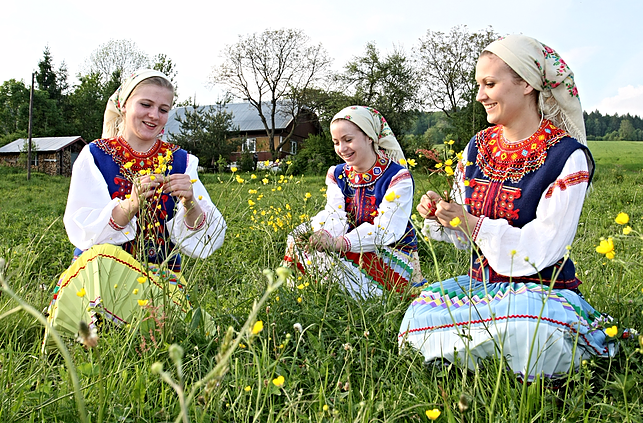
BOYKOS
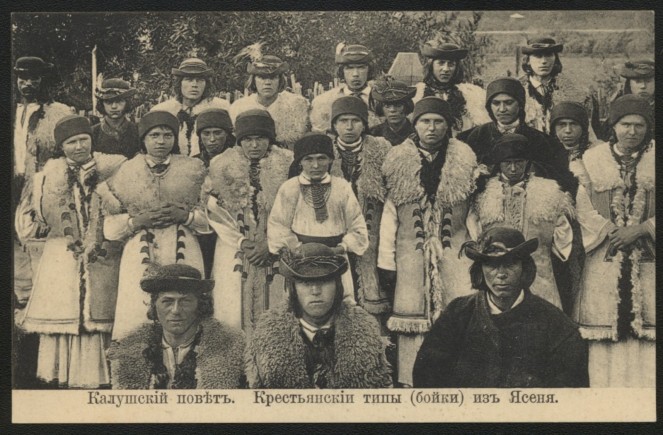
There are many Boyko villages scattered across the northern and southern slopes of the Carpathian Mountains, in the valleys and along the banks of the Limnytsya, San, and Uzh Rivers. Much has been written about where the Boykos came from and who they really are. Are they the descendants of Serbian clans or the ancient Slavic tribe of White Croats? Or maybe their ancestors were the Boii, a Celtic tribe of the later Iron Age? The question remains open to debate.
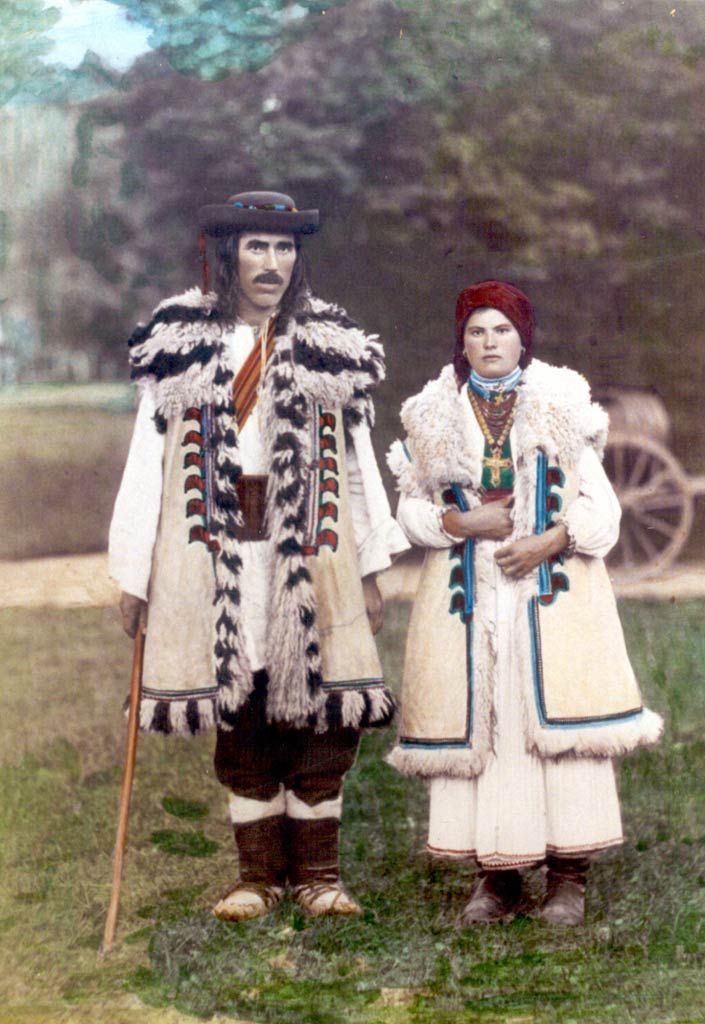
The Boykos often call themselves “verkhovyntsi” (highlanders). They speak a distinct dialect, often using the phrase “бойє” (just because). Visitors and guests are usually treated to baked potatoes, pickles, cabbage, bacon, “kholodets” (aspic dish), and a glass of local brew. The Boykos used to build large houses from massive spruce logs, and cover the roof with bound sheaves of straw. Windows, doors, and gates are still decorated with wonderful colourful figures, the most important of which is the tree of life. A spirited and happy people, the Boykos love to show off their traditional step dance from the village of Bitlya, which is performed in pairs standing on a wooden barrel.
[embedyt] http://www.youtube.com/watch?v=OQN4M5bpXhw[/embedyt]
HUTSULS
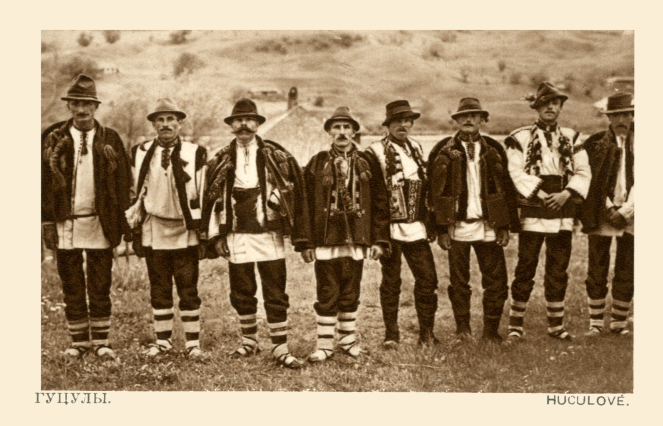
Hutsuls are called the Ukrainian mountaineers. Most Hutsuls live in Ivano-Frankivsk, Zakarpattia and Chernivtsi regions of Ukraine.
The Hutsuls are a freedom-loving and independent people. They are hospitable, but do not welcome strangers openly into their family. They pay special attention to their clothes; even the men like to proudly display their “kyptari” (sheepskin jackets), embroidered with gold and silver threads, and decorated with pompons, sequins and buttons. Hutsul homes are also richly decorated with embroidered towels, napkins and woven carpets. Their furniture is intricately carved. They are extremely fond of weapons, proudly declaring that it is indeed a poor Hutsul who would have only two pistols and not more tucked into his belt.
The significance of the name “Hutsul” is still open to debate. Some historians believe that the etymology of the word dates back to the Moldavian words “гоц” or “гуц” (pronounced “gotz” or “goots”), which means “thief”; others think it is related to the word “кочул” (pronounced “kochul”), which means “shepherd”. Whatever their origin, Hutsuls have always been shepherds, and skilled in playing the trembita, a long wooden pipe-like instrument used to transmit signals during the transhumance season.
A strong tradition of shamanism exists among the Hutsuls. If you are lucky, you can meet a Hutsul molfar, a person with purported magical abilities, skilled in herbalism and other folk magic. In ancient times they were called “earth gods”, but today they are believed to be healers, sorcerers, or soothsayers. Molfars are much respected; their prophecies often come true, and they have allegedly cured very sick people.

BUKOVYNIANS
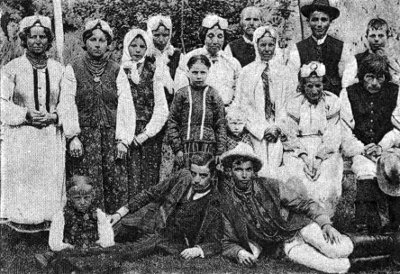
Bukovyna was established as a province by the Austrian Empire. To put it simply, it is currently divided into two parts, the north belongs to Ukraine and the south to Romania.
Bukovynian villages in Chernivtsi Oblast are immediately recognizable: the houses are built very close to each other; the villages are neat, tidy and well planned. Bukovinians whitewash their homes and decorate them with two bands of colour. The upper one is painted just below the roof, decorated with floral patterns or geometric shapes, visually connecting the roof to the wall; the lower one painted bright red or blue is functional, protecting the lower part of the house from mud and dirt. Some owners decorate their houses with fancy pilasters and columns, and paint the walls between the windows in vivid eye-catching tones.
The costume of Bukovyna is very complex, although the same could be said of most costume traditions. Generally speaking, the costume consists of a chemise, a wrap-around overskirt [obhortka, horbotka, opynka, fota], a wide sash that holds the overskirt in place, and a headdress of some kind, elaborate or very simple. One of the most unique features of the elegant karabulia headdress is that it is often decorated with feathery seed heads of a local type of bulrush. These stir in the slightest breeze and provide graceful movement to the headdress.
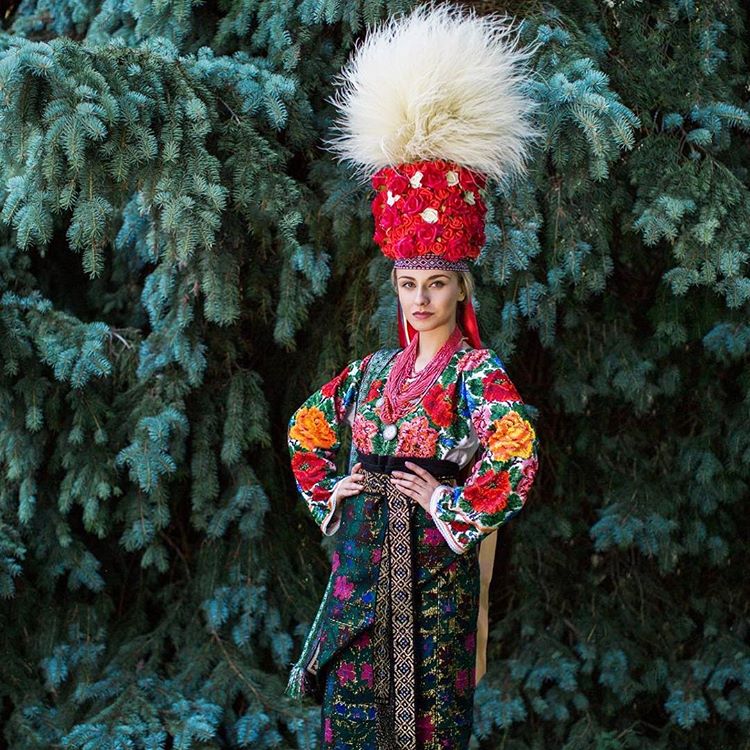
PODOLIANS

Podillya is a region located in the west-central and south-western parts of Ukraine and in northeastern Moldova (i.e. northern Transnistria). It is a historic area set between the Dnister and Southern Buh Rivers. It is quite probable that the ancestors of modern Podolians began settling here in the 4th–3rd century BC. Podillya is derived from Old Slavic “po”, meaning “by/next to/along”, and “dol” – “valley”.
Podillya culture has undergone many influences: Poles, Jews, Greeks, Russian Old Believers and Armenians, all of whom have enriched local life and traditions, and which also explains the many Catholic and Orthodox churches, Muslim minarets, and Jewish synagogues. Podillya arts and crafts are also very unique - pottery, weaving, embroidery and basket weaving.
Traditional costumes are richly decorated with embroidery and openwork (technique that produces decoration by creating holes, piercings, or gaps that go right through a solid material such as metal, wood, stone, pottery, cloth, or leather). Women’s shirts have sleeves that are embroidered with intricate patterns and symbols. No less popular are the woven carpets that seem to “speak” to you through their exquisite plant or geometric patterns.
Traditional Podilian houses are covered with a light coat of blue paint and shades of red clay. The interior is richly decorated with embroidered towels and napkins. Even the traditional oven - the sacred hearth of each home – features imaginative paintings of pine branches and field horsetail motifs, as well as other plant life.
The cult of the land was widespread among ancient Podolians. It was unacceptable to mutilate or violate the rich black soil that provided sustenance for everyone. An ancient practice tells how Podilians swore an “oath” to their land, falling upon their knees and filling their mouths with soil. It was believed that the miraculous power of this soil would cure them of wounds and burns. Podilians also believe that their “land and soil” is an amulet that can protect soldiers from enemy bullets.
AFTERWORD
Ukraine is a multi-ethnic, multi-language and multi-culture country. It is home to many nationalities; twenty-two percent of Ukraine’s population is composed of ethnic minorities. Russians are the largest among them, about 17 percent of Ukraine’s population, who historically lived in the southern and eastern part of the country. Other significantly represented nationalities include Romanians, Belorusians, Crimean Tatars, Bulgarians, Hungarians, Poles, Jews, Greeks and Armenians.
Since the first day of its independence in 1991, the leadership of Ukraine has faced the challenging task of building a national identity that would unite various regions with ethnically diverse populations. The Euromaidan protests and the February Revolution of Dignity in 2014 have led to a clearer understanding of Ukraine’s cultural diversity. Against the background of Russia’s occupation of Crimea and ongoing persecution of the Crimean Tatars and anything related to Ukraine, as well as Russia’s invasion of the Donbas and the ongoing war, the Ukrainian government and Ukrainian society as a whole are faced with the formidable task of building a democratic country and reinforcing its unity, while respecting the identity of each minority group.
